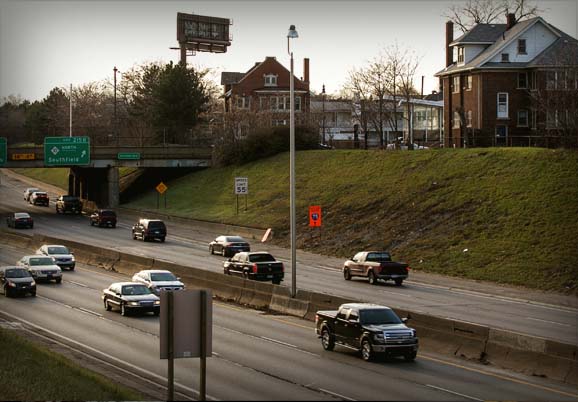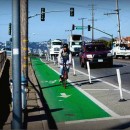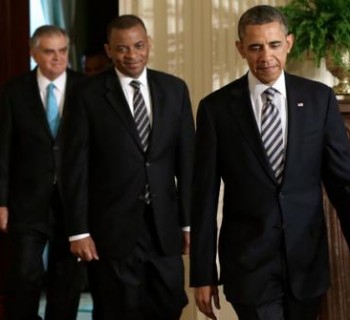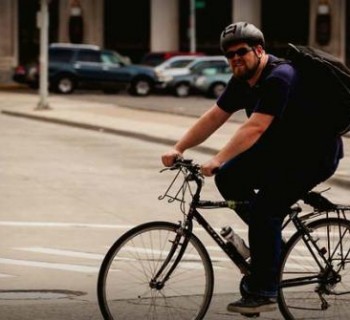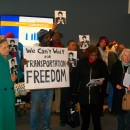DETROIT—An alliance of local nonprofit and community groups caused a bit of a stir last December when it requested an additional environmental review of a planned widening of the I-94 expressway. It turns out, however, that the coalition isn't the only one who's asked the Michigan Department of Transportation for what's known as a supplemental Environmental Impact Statement on the I-94 expansion.
Late last year, both Henry Ford Health System and Wayne State University made their own requests to reopen environmental review of the project, which would renovate I-94 between Connor Avenue and I-96 in Detroit.
HFHS sent its request last November in a letter to MDOT's Metro Detroit Manager of Planning Jim Schultz. Wayne State followed suit in December with a similar letter addressed to the agency and the Southeast Michigan Council of Governments, the organization that authorized the renovation last summer.
Under the National Environmental Policy Act, stakeholders can request a supplemental in order to reconsider significant changes to a federally-funded project that have taken place after an initial Environmental Impact Statement. Once initiated the process would temporarily halt the project.
Tom Habitz, Urban Planning Specialist for Henry Ford Health System, told Mode Shift his employer sent MDOT the request so they and other Midtown Detroit stakeholders could get design changes incorporated into the plan.
"Henry Ford Health System's been involved pretty significantly with working on accessibility and mobility improvements throughout the district that we operate in, and we have some concerns that the plan as currently conceived might work against some of that."
The health system is currently partnering with Wayne State on a roughly $1 million streetscape enhancement project along Detroit's Trumbull Avenue. The changes will bring substantial pedestrian and bike-friendly improvements like landscaping, new signage, increased lighting, pavement and bike lanes to a stretch of Trumbull between Warren and Holden, located in the vicinity of the proposed highway expansion. Money for the effort is coming from MDOT's Transportation Enhancement program and matching funds from the two institutions.
While the hospital system appreciates the need for modernization of the state's freeway system, especially in regards to safety concerns, it wants MDOT to strike a better balance between local residents and users, on the one hand, and commuters and freight traffic, on the other.
"It's become clear especially over the past couple of years with the growth and development around Midtown that the current context and the current development environment are much different than what they were when that planning was begun and when the last round of planning finished," he said. "And in the conversation that we've had [with MDOT] we understand it would really require a revision to the EIS to get some of the changes that would reflect how much more growth and density is currently present in Midtown and provide a different solution especially for that section of 94 that runs through Midtown and impacts the Lodge interchange."
Habitz added that Henry Ford Health System and its other Midtown partners share a vision of a multi-modal pedestrian-friendly environment that seamlessly links up Midtown with the HFHS hospital campus, New Center, TechTown, Woodbridge and the surrounding area.
Touching on similar themes, Wayne State, in anticipation of a Southeast Michigan Council of Governments vote to amend the project, issued it's own letter to MDOT on the topic of the I-94 widening in December.
"We fear [the I-94 project] will further divide the TechTown innovation district from main campus and hinder the continued growth of that neighborhood," wrote President Roy Wilson. "We also believe that the resources necessary for such and expansion would be better utilized in support of other transit options (rail, trolley, bicycle, or bus) or measures such as those described below to increase connectivity rather than to divide the neighborhood further."
He went on to recommend MDOT minimize the number and width of new travel lanes associated with the proposed renovation, enhance I-94 bridges at Cass and Woodward to incorporate retail or green space caps, and conduct a supplemental EIS as well as a Health Impact Assessment of the project.
MDOT is currently reassessing whether it needs a supplemental EIS before it gets started on the renovation. Spokesman Robert Morosi told Mode Shift that his agency responded to requests from both HFHS and WSU and that its "response letters speak for themselves."
"We have met federal requirements by performing re-evaluations of the EIS regarding the recently completed Van Dyke Avenue overpass above I-94, the recently completed design of the Gratiot Avenue overpass, and the soon-to-be constructed Woodward over I-94," he said. "We are operating within the confines of the law and in a good faith effort on issues raised by local officials, stakeholders and the community."


